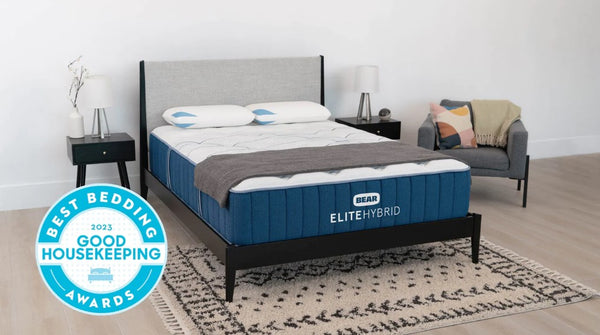
Getting a good night’s sleep is essential for our overall well-being, yet many people struggle to achieve it. A comfortable sleep environment can make a world of difference in your quality of rest. In this guide, we will explore various elements you can adjust and enhance to transform your bedroom into your personal sleep sanctuary, boosting both your sleep quality and overall health.
The Ideal Sleep Environment: What You Need to Know
Creating a comfortable sleep environment involves several factors that work in concert to help you drift off effortlessly. Here are some fundamental aspects to consider when aiming to enhance your sleep atmosphere:
- Temperature Control
- Lighting
- Noise Management
- Comfortable Bedding
- Personal Touches
Temperature Control: Finding Your Comfort Zone
Temperature plays a vital role in your ability to fall asleep. The ideal sleep temperature for most individuals typically ranges between 60°F to 67°F (15°C to 19°C). Here are some tips to manage your bedroom temperature effectively:
Use a Fan or Air Conditioner
If you find yourself sweating through the night or waking up feeling too hot, consider using a fan or air conditioning system to maintain a cooler sleep environment. Fans can also add white noise, which can be beneficial for masking other sounds.
Choose the Right Bedding
Opt for breathable and moisture-wicking fabrics for your sheets and blankets. Cotton, linen, and bamboo are great materials that regulate temperature, keeping you cool in the summer and warm in the winter.
Layer Your Bedding
Layering your bedding can help you easily adjust your comfort level as the night goes on. Keep lighter blankets available for warmer nights, and heavier blankets for cooler evenings, ensuring you can find your ideal sleeping temperature no matter the season.
Lighting: Setting the Mood for Sleep
Proper lighting is crucial in creating a restful atmosphere. Bright lights can signal your brain to remain alert, while softer, dimmed lighting encourages relaxation. Here’s how to manipulate lighting in your sleep environment:
Embrace Natural Light
During the day, let natural light in by opening your curtains. Natural light exposure helps regulate your circadian rhythm, the body’s internal command center for sleep-wake cycles.
Utilize Blackout Curtains
When it comes to nighttime, consider using blackout curtains to block external light. This not only helps you fall asleep faster but also improves sleep quality by preventing disturbances from streetlights or early morning sunlight.
Dim the Lights Before Bed
As bedtime approaches, turn off harsh overhead lights and instead utilize lamps or soft lighting to create a calming atmosphere. Switch to warmer color bulbs to foster relaxation and prepare your mind for sleep.
Noise Management: Tuning Out Disturbances
Noises from your surroundings can significantly interrupt your sleep patterns. It’s essential to create a serene soundscape that promotes deep rest:
Identify Noise Sources
Determine where the noise is coming from—whether it’s traffic, neighbors, or a noisy heater—and take steps to mitigate it. Simple solutions may involve relocating furniture or using rugs to absorb sound.
Use White Noise Machines
White noise machines can help drown out disruptive sounds, providing a steady background hum that can help some people drift into deeper sleep.
Invest in Quality Earplugs
If external noises are a nightly challenge, consider investing in comfortable earplugs designed for sleep. These can minimize disturbances and help you create a more peaceful resting environment.
Comfortable Bedding: Your Sleep Foundation
Your mattress and pillows are crucial in achieving a comfortable sleep. A well-designed sleep surface should support your body, promote proper alignment, and provide coziness:
Determine Your Ideal Mattress Firmness
The ideal firmness level varies per individual, depending on body type and sleeping position. Conduct research to find out what works best for you—some may prefer a softer surface, while others may need a firmer feel for proper spinal alignment.
Invest in Supportive Pillows
Your pillow choice is just as important as your mattress. Your ideal pillow should support your neck and head, maintaining a neutral spine position. Experiment with different types, including memory foam, feather, and hypoallergenic options, to find the ones that suit your comfort needs best.
Regular Maintenance and Replacement
Ensure that your bedding items remain clean and fresh. Wash your sheets at least once a week and check your mattress and pillows for support. Replace any worn-out bedding products so you can continue enjoying restful nights.
Personal Touches: Make It Yours
Your bedroom should reflect your personality and be a welcoming retreat. Consider these ideas for adding personal touches that enhance your sleep environment:
Choose Soothing Colors
The color scheme in your bedroom can have a significant impact on your mood. Consider incorporating soothing colors such as soft blues, greens, or muted earth tones that promote tranquility.
Implement Calming Aromas
Certain scents can promote relaxation and enhance your sleeping environment. Use essential oil diffusers or scented candles to incorporate calming aromas like lavender or chamomile, which are known for their sleep-inducing properties.
Add Personal Comforts
Add items that make you feel relaxed and comfortable, such as soft throws, favorite books, or meaningful decor. A little personalization goes a long way in making your bedroom feel inviting.
Creating a Tech-Free Zone
In today’s digital age, it can be challenging to disconnect from devices that often disrupt our sleep. Here are several effective strategies for creating a tech-free zone:
Establish Digital Boundaries
Set a specific time each night to step away from screens, allowing yourself to unwind fully before bed. This will help promote better sleep hygiene and prepare your mind for rest.
Designate a Charging Area
If you need to charge your devices overnight, consider establishing a designated charging area outside your bedroom. This can minimize the temptation to check devices while in bed.
Utilize an Old-Fashioned Alarm Clock
Replace your smartphone as an alarm clock with a traditional one. This move will help you resist the urge to scroll through your phone as soon as you wake up and improve your sleep environment.
The Journey to Sweet Dreams Awaits
Creating a comfortable sleep environment is an ongoing journey that involves recognizing the factors that impact your sleep quality. By putting into practice the strategies mentioned above, you will gradually unveil your personalized sleep sanctuary. Remember, every aspect—from temperature to décor—can influence your overall sleep experience. Enjoy the process of transforming your bedroom into a place of relaxation and rejuvenation. Your journey to sweet dreams awaits!








